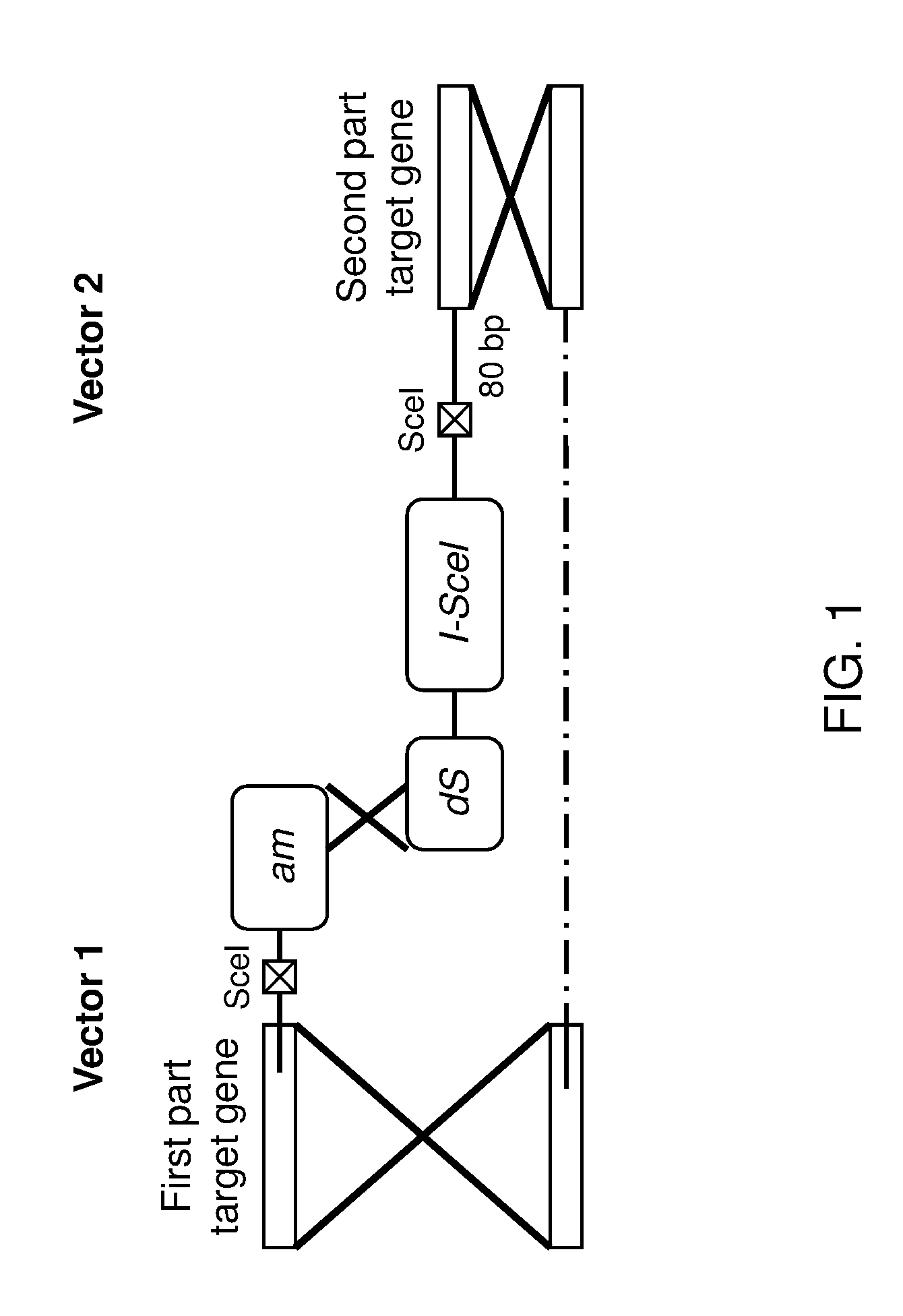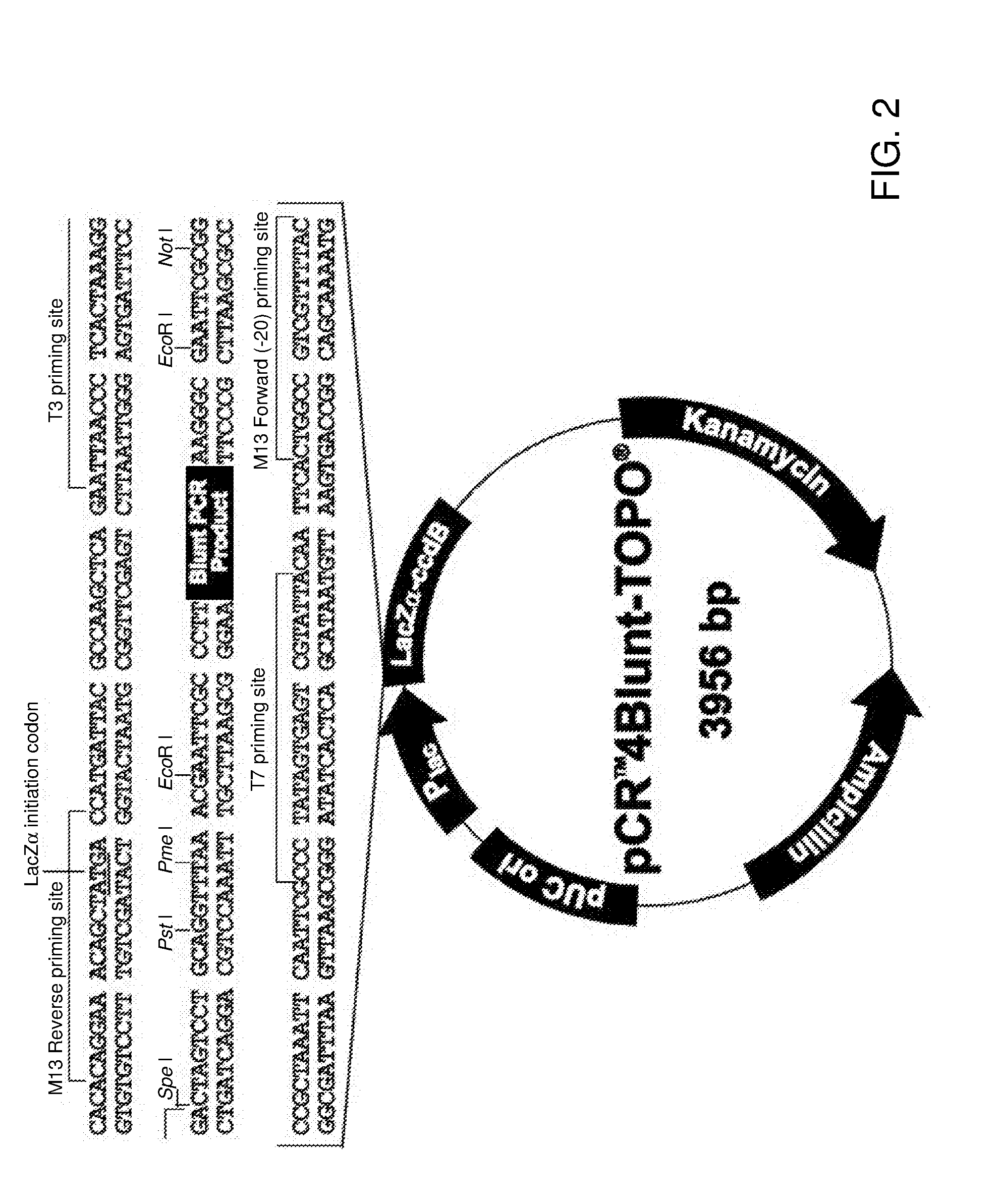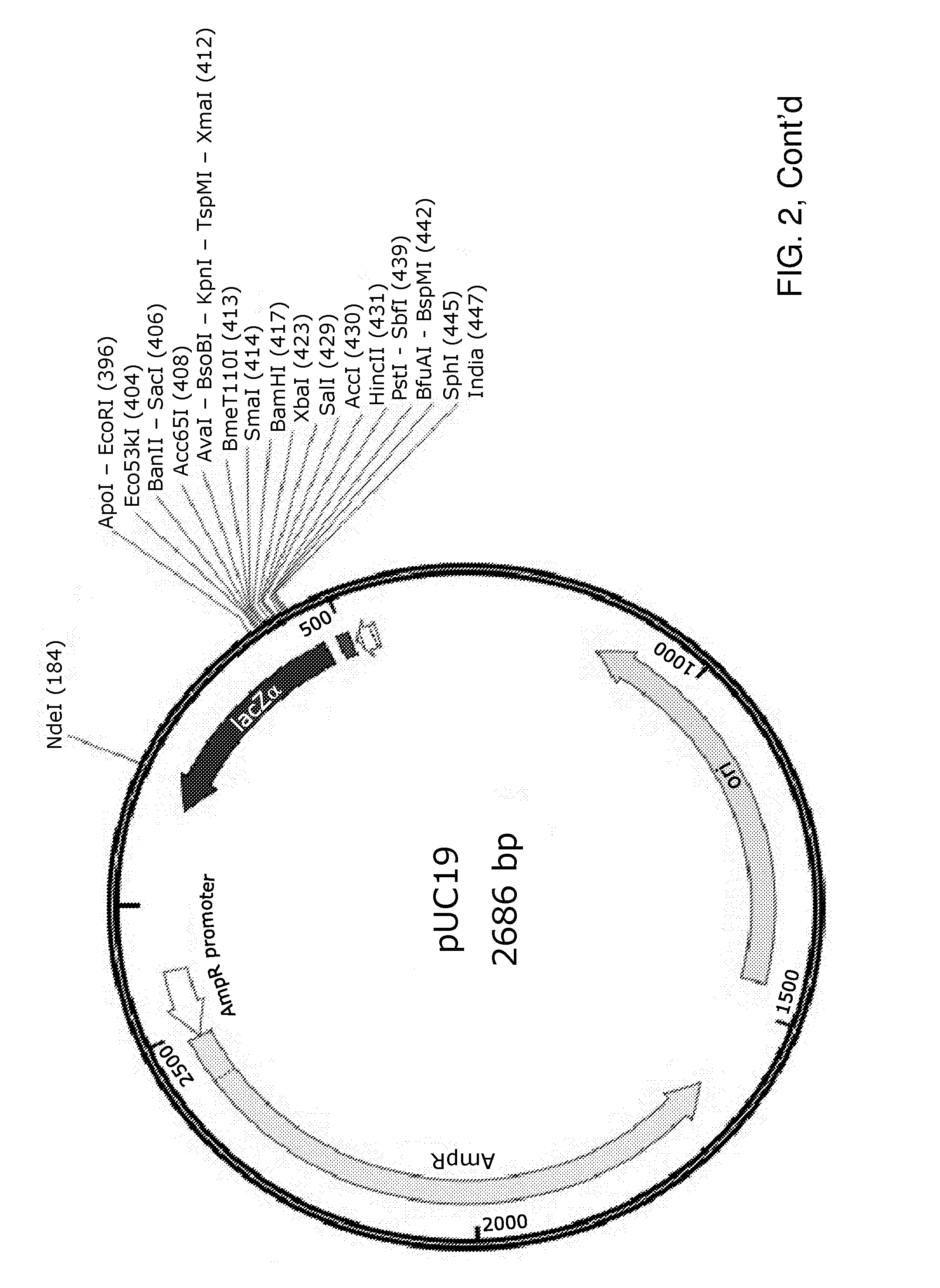Novel genome alteration system for microorganisms
- Summary
- Abstract
- Description
- Claims
- Application Information
AI Technical Summary
Benefits of technology
Problems solved by technology
Method used
Image
Examples
example 1
[0056]Materials and Methods
[0057]Strains and Cultivation Conditions
[0058]All Saccharomyces strains used in this study are listed in Table I. For growth in liquid media, shake flasks were put in the incubator shaker at 200 rpm and 30° C. For growth on plates, all strains except CBS1483 were grown at 30° C. CBS1483 was grown at 20° C. The strains have been grown in different media: Under nonselective conditions, yeast was grown in complex medium Yeast Peptone Dextrose (YPD) containing 10 g / L yeast extract, 20 g / L peptone, 22 g / L glucose 1 hydrate, pH 6), Synthetic Media (SM) containing 5.0 g / L (NH4)2SO4, 3.0 g / L KH2PO4, 0.5 g / L MgSO4.7H2O, 1 mL / L trace elements solution and 1 mL / L of a vitamin solution (Verduyn et al., 1992) were used [Verduyn et al., (1990). J General Microbiology 136: 395-403].
[0059]When amdSYM (AgTEF2-amdS-AgTEF2ter) was used as marker, (NH4)2SO4 was replaced by 0.6 g / L acetamide as nitrogen source and 6.6 g / L_1K2SO4 to compensate for sulfate supply (SM-Ac). Recycl...
example 2
[0125]Genomic DNA of the Kluyveromyces lactis strain ATCC 8585 was prepared as described (Burke et al., 2000. Cold Spring Harbor Laboratory. Methods in yeast genetics: a Cold Spring Harbor Laboratory course manual). ORF KLLA0F27995g, encoding KIGBU1, was amplified from genomic DNA using Phusion Hot-Start polymerase (Finnzymes) and primers GBU1 forward primer (5′-CATCCGAACATAAACAACCATGAA GGTTGCAGGATTTATATTG) and GBU1 reverse primer (5′-CAAGAAT CTTTTTATTGTCAGTACTGATCAGGCTTGCAAAACAAATTGTTC). The coding sequence of the K lactis GBU1 gene was obtained.
[0126]A set of targeting constructs comprising the selection marker KIGBU 1 with all essential parts for the standard deletion cassette is provided in FIG. 4. The 400 base overlap in the selection marker KIGBU 1 (indicated by a cross) is designed to recombine due to the homology.
PUM
 Login to View More
Login to View More Abstract
Description
Claims
Application Information
 Login to View More
Login to View More - R&D
- Intellectual Property
- Life Sciences
- Materials
- Tech Scout
- Unparalleled Data Quality
- Higher Quality Content
- 60% Fewer Hallucinations
Browse by: Latest US Patents, China's latest patents, Technical Efficacy Thesaurus, Application Domain, Technology Topic, Popular Technical Reports.
© 2025 PatSnap. All rights reserved.Legal|Privacy policy|Modern Slavery Act Transparency Statement|Sitemap|About US| Contact US: help@patsnap.com



